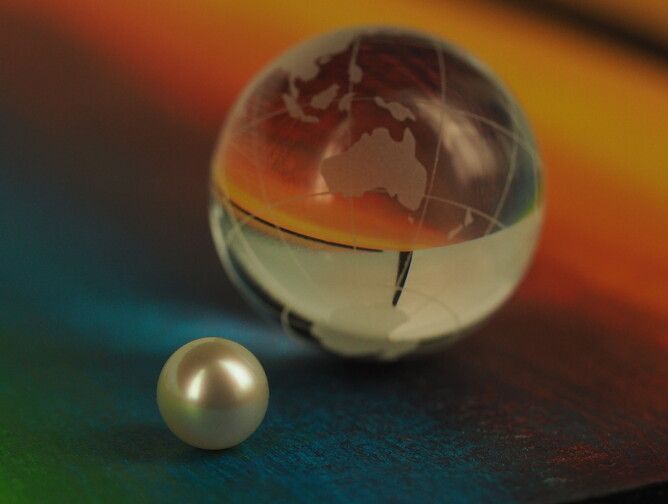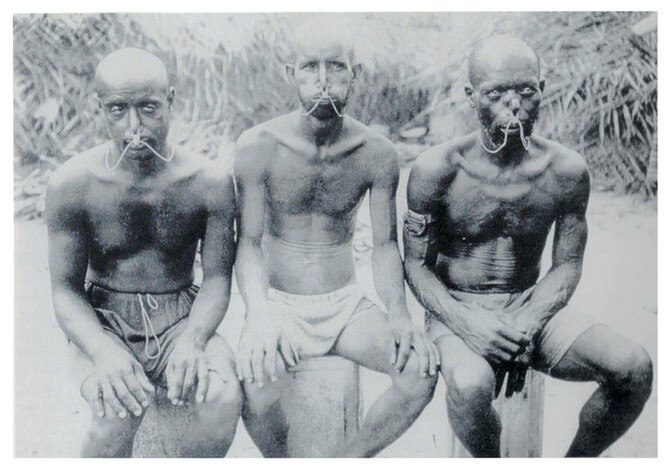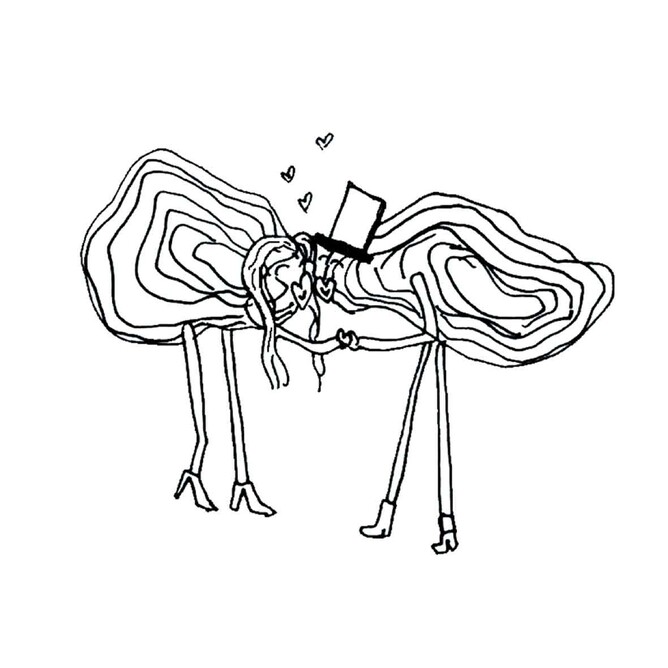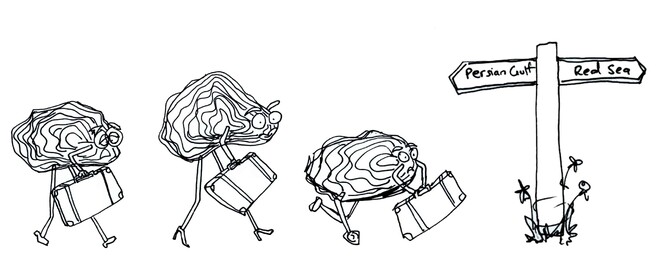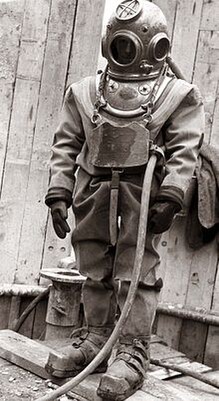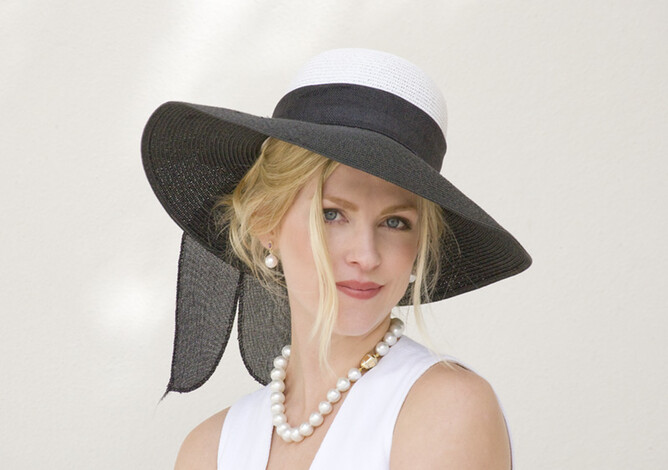The Pearl
'A thing of breathtaking beauty', a currency of old, more valuable than a city, a symbol of status and from the words of Pliny, the world’s ‘most exquisite and beautiful.’
With all of this said, you would think that the people responsible for sourcing pearls would have been valued members of society.
Unfortunately, in times of old they were on the bottom rung of society’s ladder and many were slaves. The work was exhausting, dangerous and often left divers with poor health.
However, the chance of finding that one perfect pearl that could lift one’s status, from a poor man to a wealthy one or be freed from slavery, was worth the risk.
Early Divers
Diving for pearls is believed to have started as far back as the 3rd millennium B.C.
Techniques used for diving were similar in nearly all countries that were involved in the pearling industry: The Persian Gulf, The Red Sea, The Gulf of Mannar (between Sri Lanka and India) and Asia.
The Diver's Costume
The diver’s costume was quite simple: a loincloth, a clip on his nose (made from animal horn) and makeshift gloves. The diver carried a sac for the oysters and a heavy weight to speed descent. The diver and the weight were attached to ropes, with the other end being affixed to a canoe.
Holding his breath, the diver jumped overboard, feet first, descending anywhere from 10 – 30 metres below. Releasing his weight, the diver then searched for oysters. Knives were sometimes needed to pry the oysters from the ocean floor.
Once the diver had gathered as many oysters as his breath would allow, he would tug on his rope signalling to the man above to pull him up. The diver would rest for a few moments and then repeat the process.
Pictured below are Bahrain pearl divers - early 20th century.
Mas'udi
I am hoping that amongst my readers, I am not the only person not to have heard of Mas'udi.
Who was he? In short, he was Arabic, born 890AD and died in Egypt 956AD.
He loved to travel and did so throughout his life. He visited many countries: Syria, Iraq, Afghanistan, Pakistan and more.
Mas'udi was intrigued by religion and the natural world. He wrote 36 books during his lifetime, recording events, places and things he had seen.
Only 2 books have survived and in one is Mas'udi’s eye witness account of pearl divers.
“They have their ear lobes split to allow them to expel air, since their nostrils are plugged with a gadget shaped like an arrowhead and made out of tortoiseshell – that is, the same kind of sea-turtle shell which is used for combs. It may also be made of horn, but not of wood. They put cotton soaked in a little oil in their ears, and when they are at the bottom of the sea they squeeze some out, which gives them a little light. They rub their feet and thighs with a black substance, and this causes the monsters of the deep, by which they fear to be dragged down, to flee far away. When they are at the bottom of the sea, they make sounds like a barking of dogs and this piercing noise serves as a means of communication among them.”
“The flesh and fat which is inside the oyster shell is a living creature, which at the approach of divers, fears on behalf of its pearl as a mother would fear for her child.”
Intriguing writings….!
So once the Oysters were collected, what next?
Different countries had different systems of control over the pearling industry and then this was dependent on whoever was in control of the country at the time.
Initially, at the close of a diving day, diver and crew would open the oysters whilst out at sea. They would collect the pearls and throw the shell and meat overboard. However, this meant that the diver and crew could conceal pearls from the owners – otherwise known as bunnias.
Bunnias, was the term used for Arab and Indian financiers who financed the pearling ventures.
Therefore to ensure the crew did not conceal any pearls from the bunnias, oysters were brought into shore, unopened.
Division of the Oysters
Once on shore the oysters were divided: a share to the local government, a share to bunnias and a share to the divers and crew.
When the Portuguese were in charge, from approx. the 1520’s to the 1620’s, this division was somewhat harsher: one quarter to the king, one quarter to the local Jesuit missionaries, one quarter to the soldiers and one quarter to the financiers, divers and crew.
If a diver were in need of money, he would auction off his share of oysters to pearl dealers. Others would keep the oysters to open themselves, ever hopeful of finding that one special pearl.
Harvesting Season
In one book I have read that in the Persian Gulf, pearl diving took place throughout the year, with the main pearling season being from June to September.
However, according to Mas'udi,
“Pearl fishing in the Persian Gulf takes place only between the beginning of April and the end of September. It ceases completely during the other months.”
Jumping Forward
Interesting to note that in 1905, the Persian Gulf generated half of the world’s pearls.
I find this fact to be quite astounding.
Why? ……Because at that point in time, the Persian Gulf had already been producing pearls for thousands of years!
How is this Possible?
It is believed that the Persian Gulf had deep-water reservoirs of oysters not reachable by divers. Here the little oysters could happily repopulate, the results of which would overflow into shallower waters and maintain supplies.
Bahrain was the main centre for the pearling industry of the Persian Gulf.
A British writer, Francis Turner Palgrave recorded the words from a Bahrainian in 1865 –
“We are all, from the highest to the lowest, slaves of the one master – Pearl.”
No More Harvesting
The invention of the diving bell along with dredges on steamships, saw the oysters decrease in numbers at a far greater rate than ever before and then in 1932 pearl harvesting in the Persian Gulf came to a very sad end……..Oil had been discovered.
Divers left to work on oil refineries and pollution seeped into the sea destroying nearly all oyster beds.
Slipping back in Time - The Gulf of Mannar
The Gulf of Mannar, in comparison had a very short pearl harvesting season. It was for one to two months, early March to late April.
At this time, quiet little villages became buzzing cities, awash with every aspect of city life.
A snippet from “The Book of the Pearl” Kunz and Stevenson,
….a scene in Sri Lanka 19th century…
“besides the eight or ten thousand fishermen….there are pearl merchants….boat repairers and other mechanics, provision dealers, priests, pawn brokers, government officials, coolies, domestic servants, with numbers of women and children. And for the government of these, and to obtain a share of the wealth from the sea, there are jugglers, fakirs, gamblers, beggars, female dancers, loose characters, with every allurement that appeals to the sons of Brahma, Buddha or Mohammed…….the whole making up a temporary city of forty thousand or more inhabitants.”
These words paint a very colourful scene!
Safe from Monsters
An interesting man that would become a valuable part of the city’s life was an abraiaman – a fish charmer.
As Mas'udi mentioned, divers feared the monsters of the deep, so to protect themselves they would pay for the services of the abraiaman.
He would cast spells on the sea monsters, which would keep the divers safe during the day.
However, these spells would dissolve at night time, allowing the monsters to go about normal life.
Of course this meant that to stay safe the next day, the abraiaman’s services had to be paid for again!
The Red Sea
Looking back well before the birth of Christ, the Red Sea Pearl fisheries differed from the Persian Gulf and the Gulf of Mannar fisheries.
There was no one central controlling body. Pearl fishing was open to anyone who wanted to pursue it.
On the face of it, this would seem a far more convivial system. But due to the lack of any governing interest, piracy was rife!
Once again though, the dream of finding the one perfect pearl and having wealth beyond belief, was worth the risk.
Because the Red Sea divers were free to choose their occupation, they did not remain in the job long. Long-term free divers suffered numerous health problems; nose bleeds, coughing up blood, blindness, deafness, loss of bladder control and if submerged too long, possible paralysis.
All good reasons not to stay in the job too long!
The Invention of the Diving Helmet
A free diver can only stay down for the length of time his held breath will allow. This of course limits the amount of oysters that can be collected. Over the years, advances in technology saw the invention of underwater breathing apparatus, thus enabling divers to stay down longer and collect more oysters.
The copper diving helmet is one such apparatus that many people are likely to have seen pictures of. Interestingly and according to Wikipedia, the copper helmet was originally invented for firemen, by the Deanne brothers, in the 1820’s. It was designed to keep them safe from smoke inhalation whilst battling fires. The Deanne brothers then progressed to inventing the diving helmet, along with Augustus Siebe, but that is another story which someone else can tell!
Free Divers Today
There are only a few people free diving today, and the work is limited.
A French writer, Christophe Loving, followed a free diving Bajau man (from the Philippines) into the water.
“He plunges and disappears like a torpedo into the deep blue, pulled down swiftly by a heavy lead weight. Equipped with air tanks, we follow him with difficulty, despite our fins. Soon we can no longer distinguish him in the plankton-rich water, but thanks to the rope that ties him to the boat it will be impossible to lose him. Our depth gauge indicates 60 metres. To continue our descent would be to court danger. He must be deeper! We wait anxiously as seconds pass. Finally, the rope shakes, a signal from Masa for his buddies to pull him back up……..He gestures to me with the huge oyster that he has picked up on the bottom….”
The Finest Pearls in the World
Today, Australia is the only country that collects wild oysters for pearl cultivation, as opposed to hatchery bred oysters.
Why? Because wild oysters simply produce the finest pearls!!
They have greater genetic diversity and stronger resistance to disease, over hatchery bred oysters. Also, Australia is the only country that has sufficient supplies of wild oysters for farming. To keep this supply safe, there is an annual quota set by the Western Australian Fisheries Department.
I would like to share with you my first encounter with the
amazing Australian South Sea pearl, but this story has gone on long
enough….. perhaps another time.
References
1. Pearls Ornament and Obsession
By Kristin Joyce and Shellei Addison
2. Pearls: A Natural History
By Neil H. Landman, Paula M. Mikkelsen, Rudiger Bieler, Bennet Bronson
3. Mas'udi - From the Meadows of Gold
4. Drawings courtesy of Rachel Ink Art https://www.facebook.com/Rache...
5. Thanks also to my Australian South Sea Pearl Suppliers for information.
